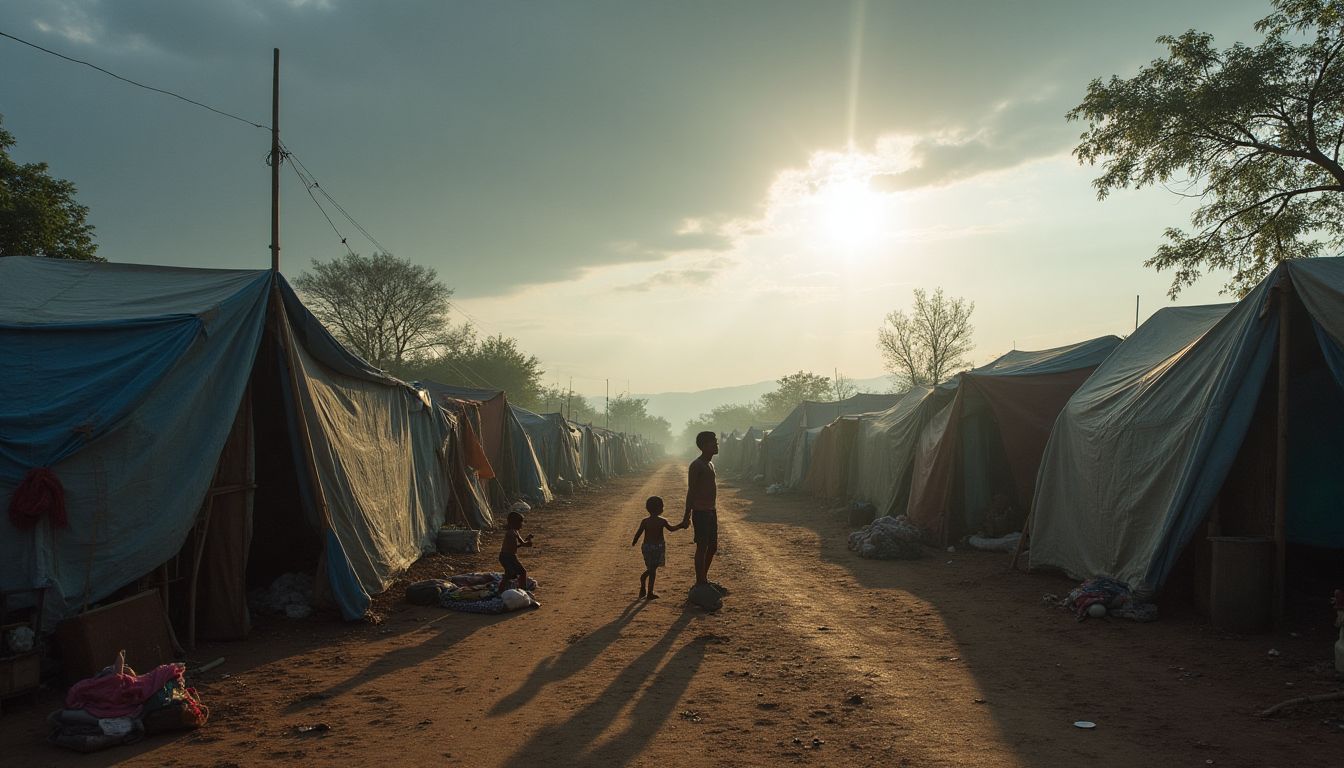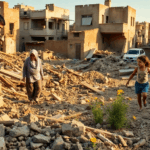Table of Contents
The ongoing conflict between Thailand and Cambodia has reached alarming levels, resulting in a humanitarian crisis that has displaced over 100,000 people. With artillery fire echoing in the distance, families are fleeing their homes, seeking refuge in makeshift shelters.
It’s a dire situation, as many evacuees have lost their possessions and face an uncertain future. How did we get to this point, and what does it mean for those caught in the middle?
Current Situation and Evacuation Efforts
Reports indicate that the worst fighting between the two nations in more than a decade has led to significant evacuations from four Thai border provinces.
Recently, thousands of residents from the northeastern Surin province have left their homes for safety, crowding into temporary shelters like a local university sports hall. This venue has quickly transformed from an educational facility into a refuge for those fleeing the violence.
Can you imagine the chaos of uprooting your life in such a short amount of time?
Those seeking shelter are often in distress, carrying only what belongings they could grab in a hurry. Many evacuees, like Thidarat Homhuan, express deep concern for their homes, livestock, and crops left behind.
The emotional toll is palpable, as families struggle with the loss of normalcy and the fear of what lies ahead. How long can they maintain hope in such trying circumstances?
Inside the makeshift shelters, a sense of community is emerging as evacuees share their experiences.
Young children play quietly while the elderly rest under blankets, all accompanied by the hum of electric fans and the whispers of uncertainty. The university administration has acted swiftly, ensuring that the shelter provides care for those in need, including mental health support for trauma victims.
Isn’t it inspiring how people come together in times of crisis?
The Human Cost of Conflict
The violence has already claimed the lives of at least 14 individuals in Thailand, including both soldiers and civilians. This tragic loss underscores the severity of the conflict, which is not just causing physical harm but also psychological distress among those affected. Many evacuees find themselves wondering when—or if—they will be able to return home. What will it take for peace to be restored?
As the fighting continues, displaced families face the harsh reality of their situation. With countless individuals lacking essential medications and supplies, the urgency for humanitarian assistance is evident. Local authorities are challenged with ensuring the safety and well-being of evacuees while managing the ongoing conflict. How can they balance these overwhelming demands?
Thidarat’s plea for decisive government action reflects a broader sentiment among evacuees. They look to their leaders for protection and support during this tumultuous time. As the situation develops, it’s crucial for governments and organizations to respond effectively to the needs of displaced populations. What steps can be taken to ensure that these voices are heard?
Future Outlook and Community Resilience
Looking ahead, the road to recovery for the affected communities will require significant effort. Evacuees are currently focused on finding stability in their new circumstances, yet they remain hopeful for a return to normalcy. The resilience shown by these individuals in the face of adversity is commendable and serves as a testament to the human spirit. How can we help support their journey back to stability?
As both nations navigate the complexities of this conflict, the need for dialogue and peaceful resolution cannot be overstated. The role of the international community in supporting humanitarian initiatives will also be pivotal in ensuring that those displaced receive the help they need. Isn’t it time to prioritize peace over conflict?
In conclusion, the humanitarian crisis at the Thai-Cambodian border is a stark reminder of the impacts of conflict on civilian life. As families seek refuge and grapple with their fears, the world watches closely, hoping for a swift resolution that prioritizes the safety and dignity of all affected. What can we do to help bring about that change?





